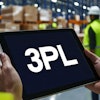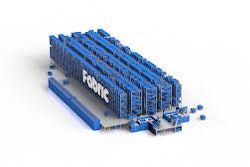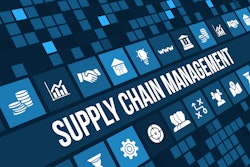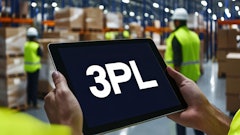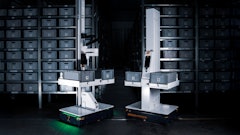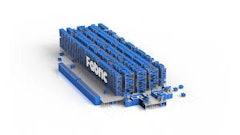
Supply chain leaders have been promised visibility for years. Every new tool claims it will finally give us a clear picture of what’s happening across suppliers, shipments and customers. Billions have been spent on platforms, trackers and dashboards. Yet if you ask most teams today where a shipment really is, why it’s late or what partner is dropping the ball, the answer is usually a shrug.
That gap between what’s promised and what’s real has a cost. McKinsey found that nearly half of executives still can’t get visibility into even their Tier 1 suppliers. Only 6% of companies have full supply chain visibility end to end. If we were truly as connected as the marketing claims, we wouldn’t still be stumbling when disruptions hit.
The truth is we’re still flying half blind.
The blind spots nobody talks about
The biggest issue isn’t that we don’t have tools. It’s that the information needed either gets stuck, shows up late, or comes in such a messy form that it’s almost useless.
One is the silos. Every carrier, supplier and partner has their own system and their own way of reporting. You might know when a container left port, but you have no idea it sat at customs for three days. Everyone’s got their slice of the truth, but nobody’s sharing the whole picture.
Another is what is called the black holes. Tracking tends to fall apart when freight crosses borders, switches modes, or goes through a subcontractor. If you’re managing a global network, that’s a lot of dark corners where things can disappear.
Then there are the delayed and fragmented updates. Even when data comes through, it’s often too late or incomplete. One carrier will send a clean update and then days later follow up with new information that changes the story. This happened during Prime Day when one small-parcel hub got overwhelmed and left entire truckloads sitting in the yard. Dashboards showed the shipments as moving, but in reality, they were stuck. It took companies nearly two days to track down a person at the hub who could explain what happened, and another two days before they started processing the orders again. If you don’t push for answers, those shipments will stay invisible. That’s the difference between data that shows up and data that shows up in time.
And finally, there’s simple overload. Even when the information is there, it’s usually raw, conflicting, and all over the place. Teams spend hours trying to reconcile spreadsheets instead of solving problems. That’s not visibility. That’s just noise.
The real cost of getting it wrong
When you can’t see straight, the costs pile up. Delayed shipments mean idle workers and frustrated customers. Missing raw materials can stall an entire production line. In an industry where margins are already thin, that’s a big deal.
During the pandemic, the financial shock was clear. Shipping costs from Asia to the United States nearly doubled, long-haul trucking in the United States jumped almost 60%, and lead times for materials stretched by more than a month. While most manufacturers scrambled to cover gaps, shipping companies saw profits soar from $200-300 billion in a single year. That’s the price of opacity, the people moving goods know more than the people relying on them.
And let’s not forget reputation. Customers today expect companies to know where their products are and how they’re made. Not being able to answer those questions is more than a logistical failure, it’s a brand problem.
Moving from noise to clarity
So, what does it take to finally see straight? It’s not another flashy dashboard. It’s building visibility that is real, usable and tied to action.
· Integrate across platforms. Stop settling for siloed views. Stitch together data across all partners and modes so everyone is working from the same story. Cloud-native platforms and APIs make this possible, but it takes commitment to pull everyone into the same ecosystem.
· Standardize the inputs. Visibility is only as good as the data behind it. Adopting common definitions and formats means exceptions are flagged the same way every time. It cuts down on the “my spreadsheet says this, yours says that” problem that eats up hours.
· Flag anomalies early. A strong system should not just display what carriers report; it should cross-check signals and highlight when something doesn’t add up. If a hub claims freight has moved but scans stall for more than a few hours, the system should throw a flag before customers start calling. Automated anomaly detection helps teams spot silent breakdowns fast instead of chasing answers days later.
· Make it actionable. Visibility should not just be about watching. It should trigger workflows in real time. If a shipment is delayed, the system should reroute freight, notify customers or shift inventory automatically.
Don’t forget the human side
It’s easy to blame tech, but visibility also depends on people and culture. Partners have to be willing to share data. Teams need to be trained to act on real-time signals instead of waiting for end-of-month reports. Leaders need to create an environment where transparency is not just encouraged but expected.
A lot of hesitation comes down to trust. Companies worry that sharing data will be used against them in negotiations. Breaking through that mindset is critical. Visibility is not a zero-sum game. When everyone sees the same truth, everyone wins.
Time to clear the fog
Visibility has become one of those buzzwords heard so often it’s lost meaning. But the stakes are real. True visibility is not just watching shipments move on a screen. It’s having confidence your supply chain can flex and respond no matter what happens.
To get there, move past half measures. Break down the silos. Normalize the data. Make it actionable in real time. Build trust between partners.
The companies that do this will not just weather disruptions. They’ll turn visibility into an advantage, one that lets them act faster, deliver better and build stronger relationships with their customers. The rest will still be staring at dashboards that look impressive but don’t tell them what they actually need to know.
It’s time for supply chains to clear the fog and finally see straight.

